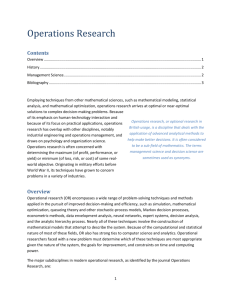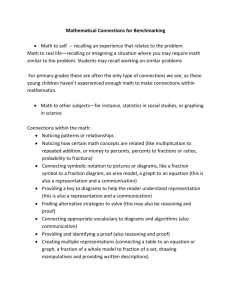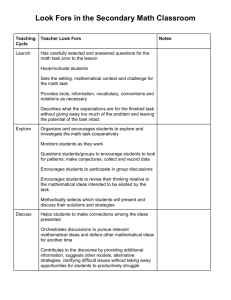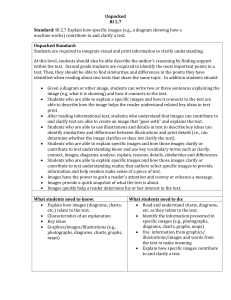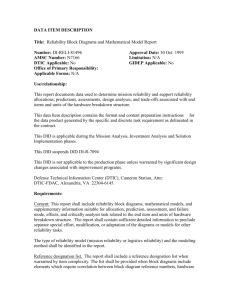Using the I.C.E. Strategy in Math Instruction
advertisement
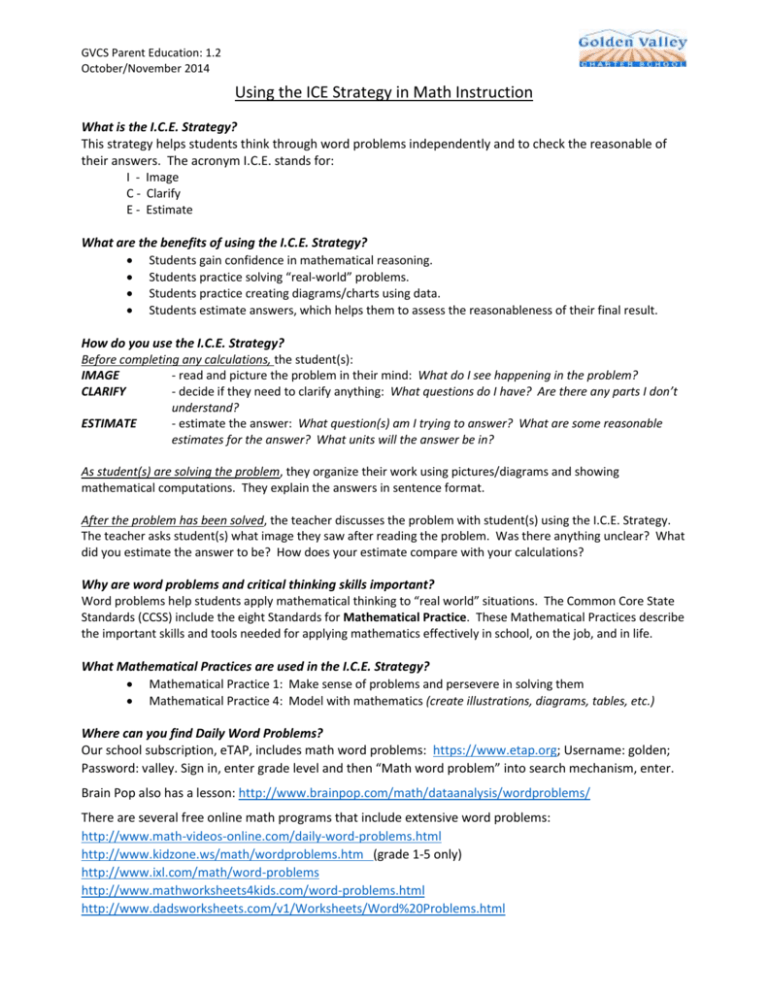
GVCS Parent Education: 1.2 October/November 2014 Using the ICE Strategy in Math Instruction What is the I.C.E. Strategy? This strategy helps students think through word problems independently and to check the reasonable of their answers. The acronym I.C.E. stands for: I - Image C - Clarify E - Estimate What are the benefits of using the I.C.E. Strategy? Students gain confidence in mathematical reasoning. Students practice solving “real-world” problems. Students practice creating diagrams/charts using data. Students estimate answers, which helps them to assess the reasonableness of their final result. How do you use the I.C.E. Strategy? Before completing any calculations, the student(s): IMAGE - read and picture the problem in their mind: What do I see happening in the problem? CLARIFY - decide if they need to clarify anything: What questions do I have? Are there any parts I don’t understand? ESTIMATE - estimate the answer: What question(s) am I trying to answer? What are some reasonable estimates for the answer? What units will the answer be in? As student(s) are solving the problem, they organize their work using pictures/diagrams and showing mathematical computations. They explain the answers in sentence format. After the problem has been solved, the teacher discusses the problem with student(s) using the I.C.E. Strategy. The teacher asks student(s) what image they saw after reading the problem. Was there anything unclear? What did you estimate the answer to be? How does your estimate compare with your calculations? Why are word problems and critical thinking skills important? Word problems help students apply mathematical thinking to “real world” situations. The Common Core State Standards (CCSS) include the eight Standards for Mathematical Practice. These Mathematical Practices describe the important skills and tools needed for applying mathematics effectively in school, on the job, and in life. What Mathematical Practices are used in the I.C.E. Strategy? Mathematical Practice 1: Make sense of problems and persevere in solving them Mathematical Practice 4: Model with mathematics (create illustrations, diagrams, tables, etc.) Where can you find Daily Word Problems? Our school subscription, eTAP, includes math word problems: https://www.etap.org; Username: golden; Password: valley. Sign in, enter grade level and then “Math word problem” into search mechanism, enter. Brain Pop also has a lesson: http://www.brainpop.com/math/dataanalysis/wordproblems/ There are several free online math programs that include extensive word problems: http://www.math-videos-online.com/daily-word-problems.html http://www.kidzone.ws/math/wordproblems.htm (grade 1-5 only) http://www.ixl.com/math/word-problems http://www.mathworksheets4kids.com/word-problems.html http://www.dadsworksheets.com/v1/Worksheets/Word%20Problems.html GVCS Parent Education: 1.2 October/November 2014 I.C.E. Image Clarify Estimate Purpose - Have students observe closely before engaging in a problem solving task. I. IMAGE What do you see happening in the problem? (Create a visual image) C. CLARIFY What is unclear? What questions do you have? Is there anything you don’t understand? E. ESTIMATE What question or questions are you trying to answer? What are some reasonable estimates for the answer? What answer do we know is incorrect? What units will the answer be in?




